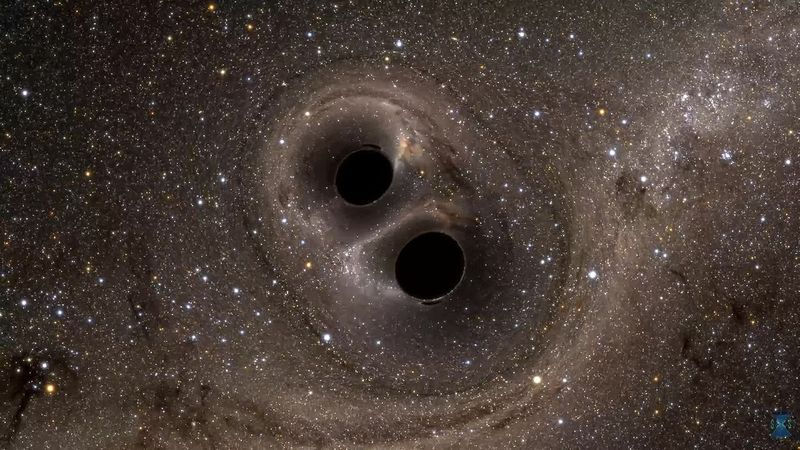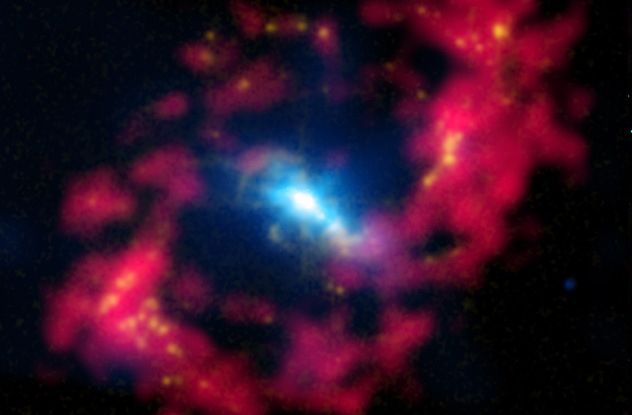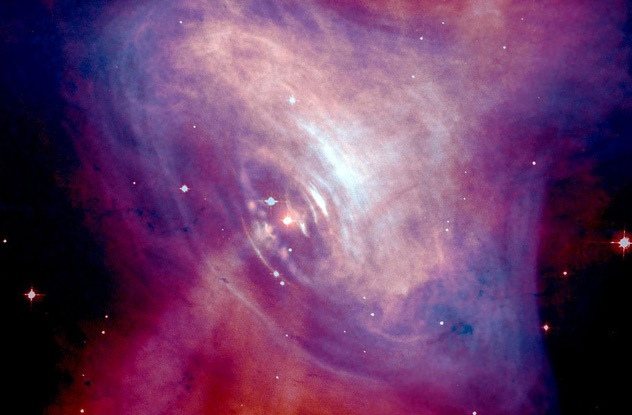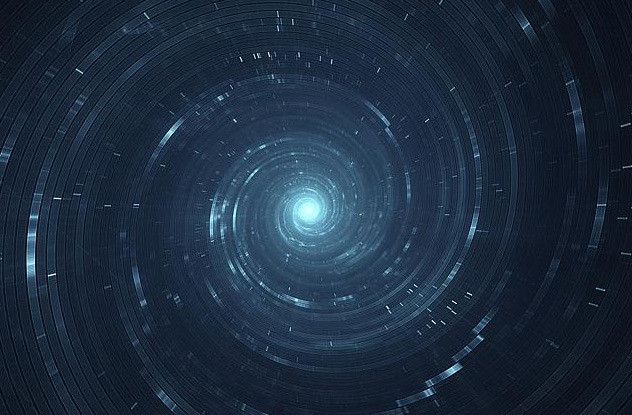10 interesting facts about black holes in the universe (Part 2)
In the first part, we learned how a black hole grows, the number of supermassive black holes in the universe . In this next section, we will learn some other interesting mysteries. about cosmic black holes.
6. Black holes can prevent the formation of stars
In the process of formation, young stars will absorb the flow of gas dust in the universe into its center with great velocity. Through the cooling process, this stream of gas dust will be condensed to form a new star.

Scientists were surprised to see that in the galaxies of old age no new stars were formed but only old stars existed. As they predicted, a giant black hole could prevent the formation of young stars. The huge gravitational pull of a black hole makes it impossible for the flow of gas to concentrate to form stars.
7. How big is the mass of the black hole?

According to research published in the Royal Astronomical Society, when a black hole loses its gas disk, it stops growing and reaches a maximum mass of 50 billion times the Sun.
However, when there is no separate gas disk, the black hole can continue to develop in the other direction. They can merge with another black hole to form a larger black hole. Merged black holes can be detected by considering the light being bent when it comes too close to the black hole.
8. The gravitational nature of black holes

Historically, scientists still believe that timeless gravity is stable and unmistakable. But recently, Canadian scientists have come up with a new, gravity-like, chaotic-like gravity as a whirlpool.
This new hypothesis helps explain the formation of spiral disk dust when sucked into a black hole. Besides, it also caused many scientists to wonder if gravity in the center of the black hole. If it is like a whirlpool, any material is swallowed by a black hole if exposed to its side. But if you go straight into the center of the black hole, it may not be affected by gravity. If so, can people send explorers to approach the black hole in the future?
9. The mysterious disappearance of Pulsar pulses

Pulsar pulses are remnant neutron stars of stars after death. They have very high rotating speeds and emit very strong radiation. Therefore, the Pulsar glows like lighthouses in the universe.
According to scientists, about 50 Pulsars can be observed in the center of the Milky Way but they actually only observed 1 Pulsar. The most likely reason is that these very high-speed rotating Pulsar pulses attract both dark matter particles at the center of the galaxy. Dark matter is invisible and unobservable, so we cannot observe these stars but can only detect through the effects of the gravitational pull of dark matter on other matter.
The fact that dark matter is attracted to Pulsas stars increases their mass many times and is enough to form a new black hole.
10. The universe can be created from a 4-dimensional black hole

We have always believed that the universe was formed from a singularity of enormous mass by the Big Bang.
According to scientists at Perimeter Institute, the universe began from a giant supernova that partially collapsed to form a black hole. Then, it attracts the remaining material to form a singular mass.
But a normal black hole cannot draw all its surrounding matter because the event horizon is a 2D plane.
Therefore, this black hole must have a 3D event horizon (3-dimensional), meaning it must be a 4D black hole. Whereas our current universe is only a 3-dimensional universe, we still don't have any information about this 4th dimension, it is still mysterious that may come at some point to scientists. Learning can explain.
- 10 interesting facts about black holes in the universe (Part 1)
- Discover the terrible war between two giant black holes in the universe
You should read it
- Discover the most bizarre black holes in the mysterious space universe
- 10 interesting facts about black holes in the universe (Part 1)
- black hole, white hole, deep hole
- The discovery of a giant black hole, 70 times the mass of the Sun in the Milky Way, challenges every theory
- Discover a monster black hole 100,000 times bigger than the Sun, the second largest in the Milky Way
- Black force - a new force in the universe, becomes even more strange
- The streams of plasma sprayed from black holes can kill anything
- This is a photograph of the first black hole of mankind, located in a galaxy 55 million light-years from Earth
- What happens when the Earth falls into a black hole?
- Is there a way to destroy and destroy a cosmic black hole?
- The first 'wandering black hole' was discovered, 7 times as massive as the sun, and it took scientists 6 years to observe it
- Astrophysics professor teaches how to jump into a black hole so it's 'safe' and possible events
May be interested

Future prospects when people own the solar system

The 7 largest objects people ever launched into space

Can the probe of Solar Probe Plus reach near the Sun?

Telescope giant FAST in China participated in the 'international hunt' to seek extraterrestrial life

Photos of the 9th planet in our solar system

When can we determine the position of the '9th planet' in the solar system?






 10 interesting facts about black holes in the universe (Part 1)
10 interesting facts about black holes in the universe (Part 1) Discover the most bizarre black holes in the mysterious space universe
Discover the most bizarre black holes in the mysterious space universe A new discovery about the strange interaction between cosmic black holes and light
A new discovery about the strange interaction between cosmic black holes and light Successfully creating cosmic black holes, demonstrating Hawking radiation exists
Successfully creating cosmic black holes, demonstrating Hawking radiation exists 40 interesting facts you didn't know about the Sun.
40 interesting facts you didn't know about the Sun. Detecting monstrous black holes, 20 billion times larger than the sun and growing 'fast'
Detecting monstrous black holes, 20 billion times larger than the sun and growing 'fast'